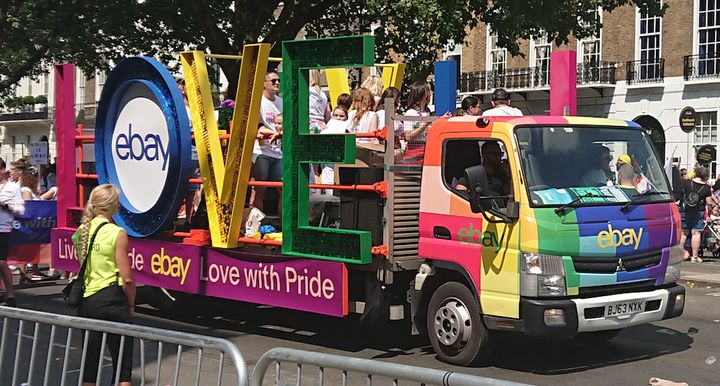
The recently-concluded 2018 London Pride parade broke all kinds of records: but many of them ought not necessarily be a source of pride.
Having attended Pride events in many countries since the 1990s, both the authors can state that there has never quite been a Pride Parade like London’s in 2018.
Not only did the parade break records for how long it took – crowds had noticeably thinned after three hours and there remained dozens of entries yet to start their procession – but the parade was truly notable for its overwhelming number of corporate entries.
From our perspective on the corner of Regent and Oxford Streets, no sooner had one or two community entries walked by, than we had yet another high-impact, high-expense motorised parade entry – usually with sound system and dancing – representing a corporate brand.
In many cases, corporate entries were ‘peopled’ with the firms’ own LGBT+ employees and allies. Notable brands included Barclays, EY, Microsoft, Dell, Unilever, Twitter, HSBC, BP, Nando’s, Tesco and many, many more.
This is a significant shift in the history of Pride Parades which originally began as a protest movement towards the decriminalisation of homosexuality, a public call for protections against homophobia, violence and exclusions from public life - and a celebration of gender and sexual diversity by community members and their allies. The march once signified LGBT+ visibility, both in the numbers of participants marching and those spectating – a single day of celebration for what has been achieved and a call for the need to be vigilant to advance inclusivity and diversity.
Of course, many corporate floats applied elements of LGBT+ culture - such as glitter, rainbows, rainbows and more rainbows, although their actual connections with LGBT+ peoples, histories and communities was not quite so evident.
One float was typical of the conundrum faced by corporate entries seeking relevance: Unilever’s admirable #unstereotype campaign seemed neutered on the day by featuring shirtless hunks dancing with a drag queen to classic disco tracks on the back of an expensive looking corporate motorised float entry with a fabulous sound system – all wrapped-up in a big rainbow.
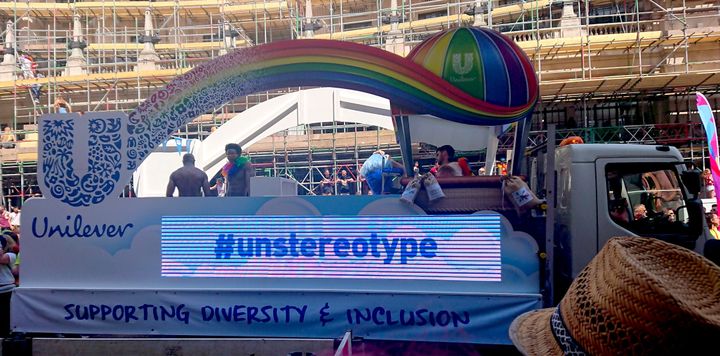
Applying so many stereotypical perceptions of LGBT+ culture to a float promoting the hashtag #unstereotype seemed unwittingly ironic - and typical of what was wrong with too many corporate entries.
While a corporate and workplace-oriented presence in Pride Parades can likely be welcomed for the support of diversity goals, we feel Pride organisers should seriously reconsider their model if they expect people to continue being motivated to attend Pride events in years to come.
The reasons for saying this is that, at present, the Pride model is functioning in a manner where the interests of its various stakeholders are being poorly met.
To illustrate this, we use this simple chart to show the mismatches that we contend have the potential to cause serious, potentially fatal damage, to Pride as an ongoing event.
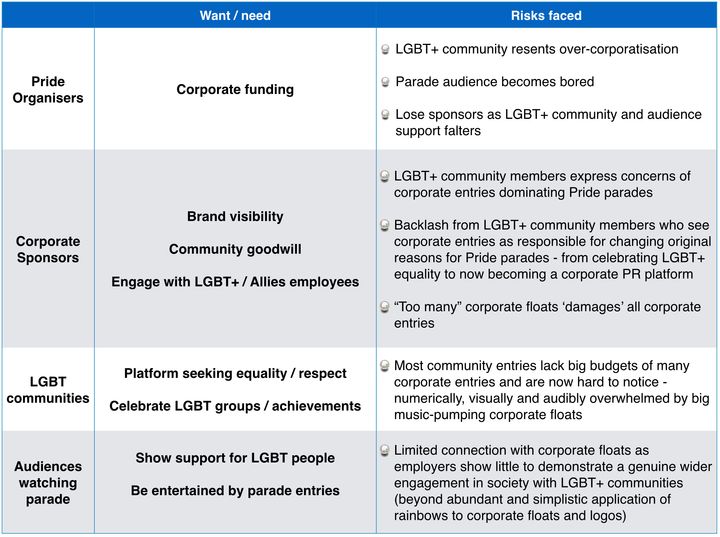
Special mention can be made of two corporate entries: Nando’s and Tesco.
Nando’s entry seems to have comprised people marching carrying a rainbow-coloured Nando’s logo and handing out stickers of said logo.
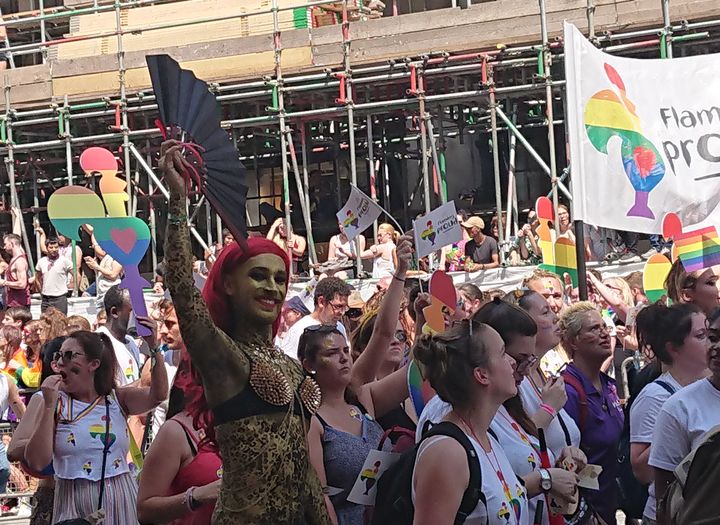
How and why this should appeal to any LGBT+ community members or even the many people who gave up hours hoping to cheer on and support LGBT+ causes remains a mystery. It is no doubt admirable that a brand chooses to show support for LGBT+ people but doing so in a way that seems to be about not much more than trying to literally cloak the brand in the rainbow colours of the LGBT+ movement just feels like cynicism parading down Regent Street on a Saturday afternoon. There was no real visible LGBT+ community support evident in Nando’s entry, other than a rainbow coloured logo and some stickers.
Tesco’s entry comprised a large disco-truck pounding out music from a float in corporate Tesco logo branding underlined by rainbow colours - and the handing out of free sweets being liberally tossed into the crowd.
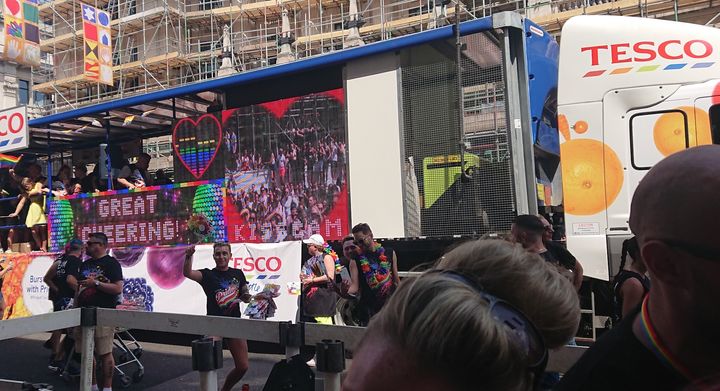
The problems in the current model are clear: when the cheering and fun is becoming increasingly confined to the thousands of people marching in the parade rather than from the audience on the outside looking in, then the organisers of Pride have a serious problem.
The people in the parade are there to show themselves to the audience looking on. If the parade itself becomes just a rolling corporate PR opportunity, then everybody loses out and - over time - all stakeholders stand to see their wants/needs being met even more poorly, then with the event’s long-term viability potentially at risk.